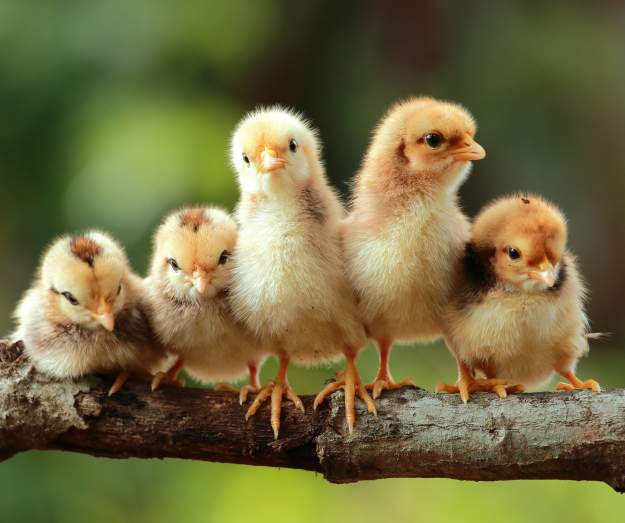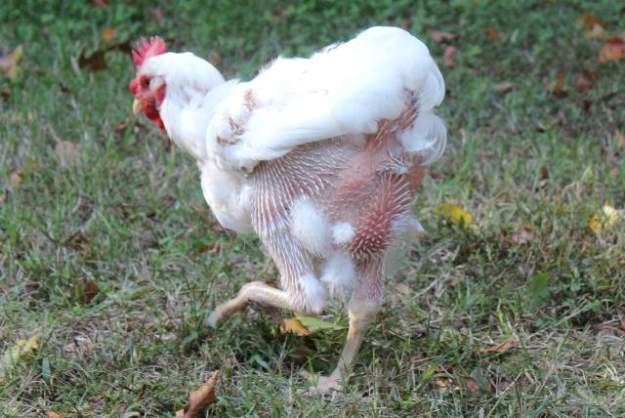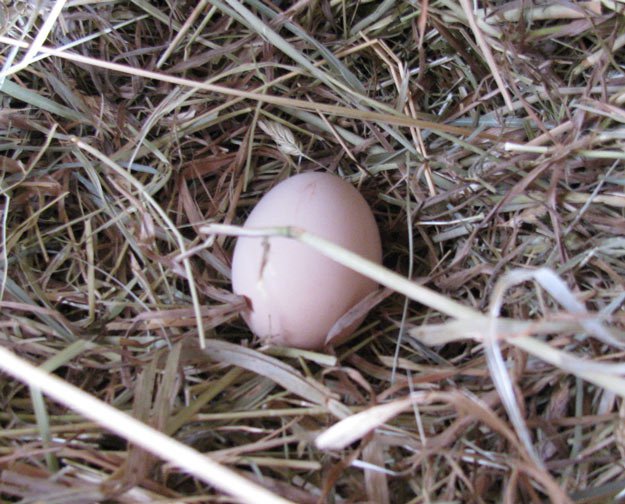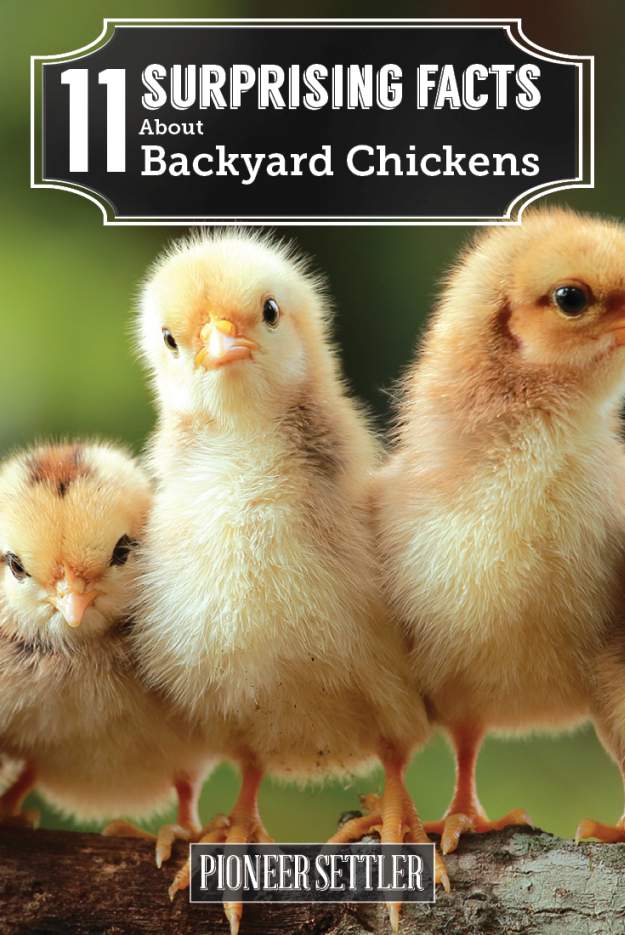Are you curious about backyard chickens? There is more to a chicken than meets the eye. Get to know these 11 surprising facts. What have you learned from raising your own backyard chickens?
Raising Backyard Chickens
By Kathy Bernier
Visitors to my farm always welcome a tour of the barnyard and chickens – our favorite attraction. Raising poultry is trendy nowadays, and with good reason. Barnyard birds are readily available, useful, fun, educational, and endearing creatures.
Barnyard birds are readily available, useful, fun, educational, and endearing creatures.
Despite the chicken's popularity, there are still lots of facts about them that seem to take people by surprise when they observe and learn about mine…
11 Surprising Facts About Backyard Chickens

Here is a list of the top eleven truths about barnyard chickens that amaze guests at my place. Please be warned, some items on this list are not well-suited to children or the faint of heart.
1. Chickens are omnivores.
This is the number one fact that startles most people. Maybe it's because chickens are so small and beautiful, or because so many predators are a threat to chickens.
“Really?! People ask me in disbelief. “I thought they just ate grain and plants.”
Chickens do eat grain and plants. I give mine organic pellets and oat groats and vegetable trimmings and leftover bread and dough, all of which they enjoy.
But none of that holds a candle to any animal-based foods. My chickens will forego everything else for bits of meat, fat, or dairy products. In wintertime, I try to increase their fat intake to help them stay healthy and comfortable. In addition to kitchen scraps, they get fatback bought from a nearby butcher and cracklings left over from past lard-making ventures and saved for them in the freezer.
My chickens are free range and prefer to find their own food whenever possible, settling for what I provide only as a last resort. In summer, they eat bugs and worms. In addition, they have been known to kill and consume small reptiles, amphibians, and even rodents.
They are omnivores. Really. They are predators, too.
2. Roosters can be either an asset or a headache, but are not essential
A chicken will lay an egg without a rooster around, but that egg can never become a baby chick. Eggs fertilized by a rooster can become chicks if kept in the right condition, which—not to worry—eggs for human consumption are not.
Many people keep roosters with their flock of laying hens. Roosters are handsome, beautiful, and if you're hatching out your own peeps they are essential. Sometimes roosters will defend the flock from evil-doers, sounding the alarm for an avian threat and fighting off interlopers on the ground. Some people say that roosters are less likely to be aggressive towards people than are hen, and that has been my experience as well.
However, roosters can be noisy. I live in a northern climate where the sun comes up very early during summer's longest days, and nobody appreciates a rooster welcoming dawn at 4 AM.
The primary reason I do not keep a rooster, however, is for the sake of the hens. Although roosters are often sweet to people, they are typically not so nice to the girls in the flock. I don't want to give you too many details, but suffice it to say that chicken breeding is rarely consensual and often violent.
People usually wonder about the birds and the bees of poultry but are afraid to ask. When I tell them the answers, a lot of it comes as a surprise.
3. Chickens are fierce and competitive.
This might not be true of animals that are kept as pets or in flocks of only two or three individuals, but my flock of fifteen semi-wild birds are real scrappers. Despite the fact that they have generous space both indoors and out, plenty of nest box space, and an ample supply of food, they push each other around a lot.
Consider the expression “pecking order”. Some birds are more powerful and demand first dibs on everything. Others get what's left. And if any of them step out of line—which they often do, just to make sure nothing has changed—they can get a sharp reprimand by way of a peck from a powerful beak.
They have their own hierarchy. I have no say in it and just stay out of the way. Who knew?!
4. Chickens fly.
They don't travel very fast or far, or get very high, but they can clear a three-foot fence pretty easily, and can possibly get much higher.
Some people clip a wing to keep them from flying. This works to prevent successful flight—clipping just one wing makes them unable to steer straight or get the lift they need to get far off the ground. It doesn't hurt them and can solve lots of problems.
We do not clip our chickens' wings. Around our place, being able to fly even a little bit is extra insurance against predation. Our hens have saved their own skin more than once by escaping to tree branches or over fences when a fox slinks onto the premises. It can be annoying to have the birds access places we don't want them, but it's a price we're willing to pay for their added security.
Not only do chickens fly, but they can run pretty fast. It's comical to watch them tearing up the tracks on two tiny feet, but they seem to take it pretty seriously. People unaccustomed to chickens think of them as flightless and slow—and are startled to find out they are neither.
5. Most chickens lose their feathers during their second autumn and every year thereafter.

It's a natural cycle called a “molt”. They lose their feathers and look pretty ghastly. We always feel sorry for our hens when they lose their coats late in the season or when cold weather comes early. It often does happen as late as December, which can be pretty wintery where I live. They seem miserable but they always survive it.
During molting, hens do not lay. For a period of four to six weeks early fall, our mature birds produce no eggs.
Visitors are often aghast at the sight of a molting hen, and relieved to hear that her condition is not due to illness or injury.
6. Chickens can lay for years, but their capacity diminishes as they age

Peak laying happens when they are pullets—first year birds—which typically lay an egg about every 26 hours. Every time they return to laying after molt, they lay less than before.
Commercial egg operations send a hen to become soup by the time she's a couple years old and her efficiency has diminished. My hens stay around until nature takes its course. My older girls have a lot of barnyard smarts, and I like to think they impart their wisdom on the younger ones.
Many folks are intrigued to learn that egg production decreases as chickens grow older.
7. Eggs vary greatly among breeds, conditions, individual layers, and ages of the birds
Open a carton of eggs from my place and you will find what looks like a crazy quilt of eggs. Brown, beige, smooth, rough, splotchy, mottled, dark green, pinkish, light green, sky blue, jumbo, dainty, football-shaped, and almost round.
I have a variety of breeds, with ages ranging from pullets to elderly. My youngest layers came from a local genetic conservationist who is developing a new breed of chicken, and those birds provide an astonishing diversity of egg colors.
As chickens age, their eggshells become thinner, more fragile, and rougher-textured. That comes as a real revelation to most people. It's fun to do a show-and-tell with visitors and egg customers, letting them feel a pullet egg that's a hard and smooth as a polished rock and an old bird egg that feels like 40-grit sandpaper.
We supply free-choice oyster shell grit for shell hardening, and some people give eggshells for this purpose, but older hens' eggs will never be the same as younger ones'.
Every bird has her own signature shape, color, and general size of egg!
Eggs get bigger as chickens age, too. Pullets start off laying very small eggs but move up to average sizes within their first winter. Older hens sometimes lay enormous eggs.
Every bird has her own signature shape, color, and general size of egg. Now that's a fun new fact!
8. Chickens Are Super Independent
I always joke that my efforts of putting up fences for chickens are received as mere suggestions. Again, pet chickens may be different, but mine aren't pets. My chickens and I have a deal—they provide me with eggs, and in return I provide them with food, shelter, and as much protection as I can. Beyond that, they have no use for me. Their body language tells me to “bring us food, bring us water, and get lost.”
Farm chickens like to do things their own way. When they pick a lane, they stay in it, and they can be hard to deter. I had three hens decide rather than move into the new ultra-insulated house for the winter with the others, they'd rather roost on the fence gate outside. I had to pick them off and hand-carry them into the house every single night for almost a month before they finally decide to let me win.
9. Chickens Are Clever and Resourceful
If there's a way to hide eggs, squeeze through a tiny opening to access off-limits space, kick another hen's eggs out of the nest box, find some snow-free ground to scratch in winter, sneak into the garden when nobody's looking, dive for cover when the shadow of a hawk crosses the barnyard, and know just exactly how close they can afford to let the dog approach—a chicken can do it.
They learn fast.
People think of them as bird brains, but most chicken-keepers have been outsmarted by their birds more often than they'd like to admit.
10. Chickens Have Language

Vocalizations are not just random noises. In the same way that a growling dog or purring cat conveys meaning, chickens make distinctive sounds. “I just laid an egg,” is discernibly different sound from “Get away from my food!” and from “I am enjoying the sunshine.”
“I just laid an egg,” is discernibly different sound from “Get away from my food!” and from “I am enjoying the sunshine.”
Farm visitors are often surprised at what chickens can tell them.
11. Chickens Love Baths
Chickens love dust baths, that is. Mine like to dig a little hole in the dirt and fluff themselves down into it, leaning off to one side with one wing extended at an awkward angle.
“Oh my gosh!” people will exclaim. “What is wrong with that chicken?!” Indeed, the chicken does look like it has a broken wing or some other malady. Sometimes people remain unconvinced until they see the hen jump up and run off.
Chickens are unique beings with a fun story to tell. I am glad to be a part of that story, and love it when I get to share the truths about chickens with farm visitors and watch them walk away with a whole new understanding of this wonderful piece of my world.
Still need a little backyard chicken 101? Then watch this video from The King's Roost:
Did any of thesebackyard chicken facts surprise you? Learn anything new? Have anything you'd like to add to the list? Let us know what you think below in the comments!


[…] 11 No One Told You About Your Chickens […]